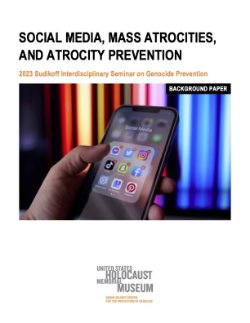Bottom Line Up Front (BLUF): Members of the DHS workforce and terrorism researchers are systematically exposed to the propaganda, ideologies, and psychologies of actors who seek to launch terrorist attacks. This content is inherently value-laden and possibly personally troubling, causing these individuals to confront potential violations of their “sacred” or “protected” values such as the preservation of life (e.g., Tetlock et al., 2000). Here we present the result of a Rapid Evidence Assessment (REA) which sought to review research across multiple fields of work in which individuals are exposed to traumatic imagery, or events. This REA found that there is a small body of extant research focused on a few key domains (namely digital forensic and Internet child sex abuse prevention) that has explored the significant psychological trauma caused by exposure to extreme content. This body of literature emphasizes the importance of gaining clarity on the nature of trauma that is caused and the role of different forms of media on traumatic outcomes (e.g., observing Reddit forums vs., watching beheading videos). However, this review also identifies a series of factors that can impact the degree of harm caused by exposure to this content. These factors include the nature of the content, individual traits, and the individual’s social and work environment. Overall, this REA has identified a range of immediate research needs to extend, or apply, this research to the DHS workforce. These include: 1. Disaggregating the relationship that exists between the various possible forms of trauma and the specific forms of media that are consumed. 2. Exploring the degree to which cognitive resilience strategies, such as those identified within Crime Scene Investigator (CSI) staff are effective. 3. Validate the degree to which organizational dynamics can negatively or positively impact the manifestation of trauma in the workforce. These include issues of culture and workload. The presence of these organizational barriers within DHS needs to be explored, and if present, mitigated. 4. While largely untested, several articles included suggestions for interventions that could increase resilience. These largely center on the importance of debriefing. Future research should investigate how effective debriefs can be structured and implemented within the DHS workforce to support the development of resilience by those who are exposed to such harmful content online. Impact on DHS capabilities: Research identified as part of this REA outlines the negative implications of individual trauma, and the important role of the organization in mitigating trauma. Specifically, factors at the organizational level such as workload management, job rotation, and organizational culture were identified as playing a potentially important role in protecting employees from trauma. Furthermore, some studies showed that experiences of secondary trauma stemming from exposure to traumatic imagery was correlated with turnover intentions. As such, to maintain a safe and effective workforce in the face of such extreme pressures, it is important that DHS emphasize the need to protect workers from the negative impacts of exposure to traumatic content and imagery.
Omaha: The National Counterterrorism Innovation, Technology, and Education Center, University of Omaha, 2023. 30p.





















